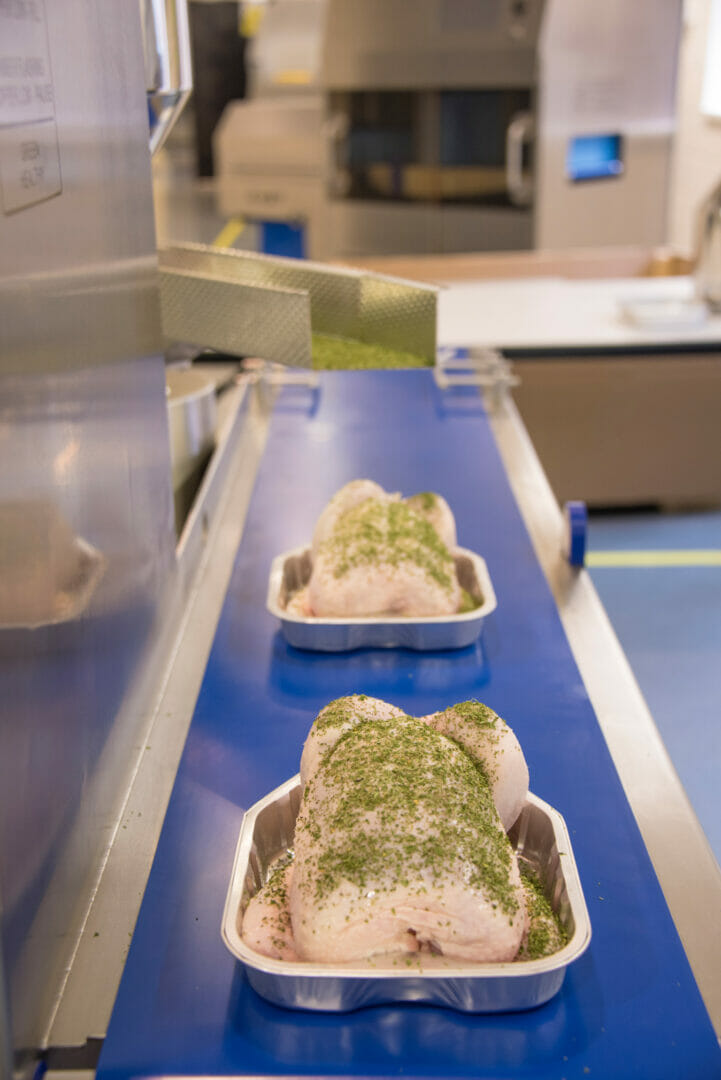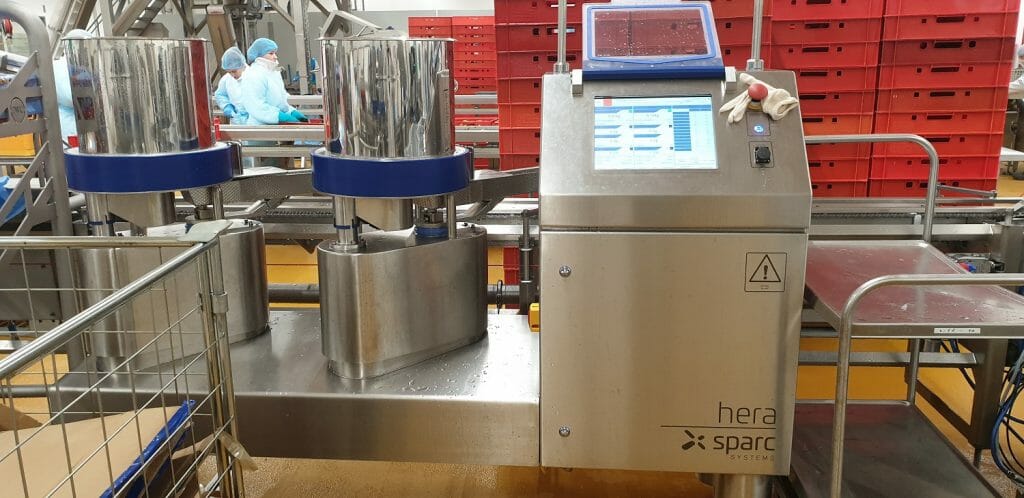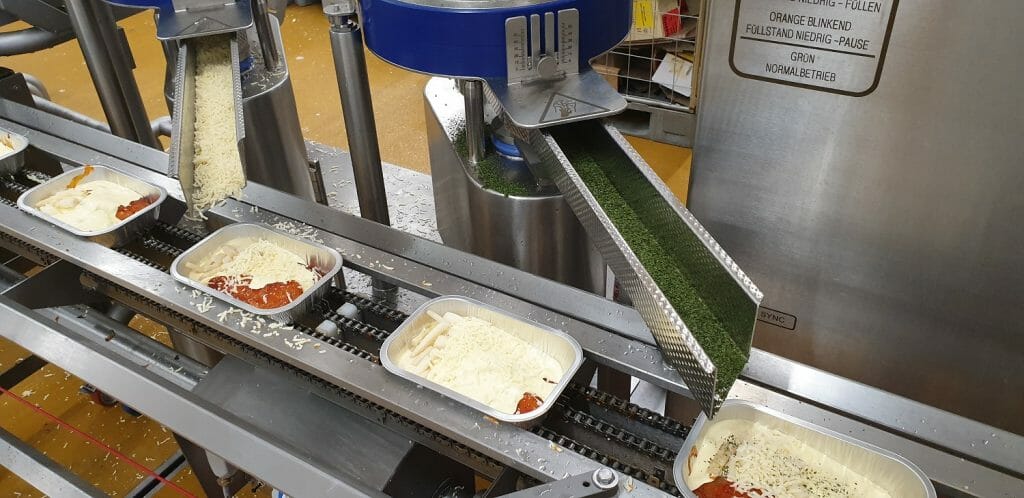With the global food inclusions market set to be worth USD 14.73 billion by 2026[i], Sparc Systems has launched an innovative loss-in-weight depositor. Designed to help meat, fish, bakery, fresh produce, dairy and confectionery manufacturers save vast sums of money by eliminating waste, Hera presents consumers with exciting and consistent looking products.
Providing layers of taste and texture to a variety of products, Hera scatters and weighs dry inclusions with accuracy and precision. From spicing up oven-ready chickens, adding toppings to ready-meals, nuts and seeds on wafer bars, dried fruit into porridge pots, decorative sprinkles on cake tray bakes and inserting confectionery into ice-cream, Hera is already helping numerous companies to automate the process and cut inclusion waste by over 50 percent. In some instances saving hundreds of kilograms of added ingredients per week.
From a retailer’s perspective, Hera ensures the best products, featuring exciting flavours, textures and nutritional value, are consistently presented to shoppers.
Rather than sieving or scattering dry free-flowing products onto applications manually or using waterfall style dispensers, both of which result in inconsistent distribution of inclusions, Hera deploys a simple yet advanced technology. Comprising a loss-in-weight control system and feeder featuring a vibrator sitting on top of load cells, Hera is typically integrated onto processing lines prior to packaging and contaminant inspection. Two Hera machines can also be integrated with a single control weight station and used as a salt and cure depositor for bacon.
Avoiding a spice storm
Guaranteed to deliver an accurate spread, as each conveyorised product passes in front of the Hera sensor, the depositor feeder tray vibrates gently scattering the dry ingredients, for instance high value spices, along the entire width of the product. To prevent high waste levels and address the issue of powder accumulating in and around the machinery and conveyor system, instead of a continuous stream, the dispensing slows and stops until a new product tray passes in front of the Hera sensor.
European Sales Manager, Charlie Graham explains: “Many inclusions, for example spices, candied fruits and nuts, vitamins and nutritional fibres like chia seeds, are high value ingredients. When added to product applications the concentration needs to be carefully controlled to minimise waste. During the development of Hera we observed that when done manually, the majority of inclusion product ended up on the floor or conveyor. Naturally, this wasted product cannot be reworked due to cross contamination and hygiene practices. Additionally, when large quantities of fine powders accumulate in and around sensitive machinery, this affects the performance of automation and inspection equipment.
“In terms of efficiency and control, automating this task leads to considerable savings on what’s effectively a highly repetitive and labour intensive task. To maintain a consistent 1 gram dispensing rate is impossible to achieve by hand,” adds Charlie.
In Avara Food’s case, Charlie recalls calculating that for each chicken the manual process used 11 grams in herbs. Yet only around five-grams ended up actually on the chicken. The rest had to be discarded.
Introducing Hera onto the company’s poultry line instantly reduced the weight of herbs scattered on each chicken to 0.9grams. Given that they perfectly season 250,000 poultry birds a week, by switching to Hera and dispensing product evenly and precisely, Avara reports that they are saving on average over 250 kilograms of herbs weekly.
- As the weight in the ingredient hopper decreases, Hera calculates the weight dispensed to the exact milligram.
- Hera can sprinkle inclusions or flavourings in up to 50 food packs or trays per minute.
Always in full control
As the weight in the ingredient hopper decreases, Sparc’s advanced checkweighing technology and control system calculates the weight dispensed to the exact milligram. Digital data of the volumetric deposits is captured and stored by the management control system. For traceability, this statistical data – attributed to a precise date, time, product and inclusion – can be networked or saved to a memory stick.
For ease of operative use, the Hera system can program and store up to 500 different product codes. The graphical interface makes it simple to select the correct food application and code to reduce set up time. Additionally, the self diagnostics feature helps food manufacturers to maintain the highest performance levels.
For extra cleanliness and tougher hygiene control, the Hera is supplied with Sparc’s unique high care conveyor and ‘no-tool’ maintenance concept. Overcoming the longstanding industry challenge of loosening belt tension during machine sanitation, in just seconds operators can unclip and disconnect conveyor motor and lift out the entire conveyor assembly for maintenance and cleaning. Belt tension and alignment are instantly restored when clipped back into place.
Although the process is highly controlled, Hera can sprinkle inclusions or flavourings in up to 50 food packs or trays per minute. Yet, for many Sparc customers, quality trumps speed. Charlie explains: “For retailers and consumers, presentation is the critical differentiator. It conveys quality. An inconsistent spread of inclusions affects the visual appeal and even the packaging seal of these products.”
As consumer tastes continue to evolve and demand for sweet, spicy, fruity or crunchy tastes and textures grow, Sparc’s Hera ‘loss-in-weight’ depositor marks a new era in automating labour intensive tasks and eliminating waste for a range of sectors.
[i] https://www.absolutereports.com/global-food-inclusions-market-16278912







